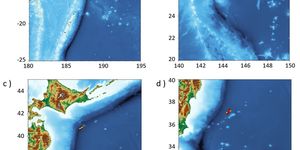Urban Climate Residents Subject to Additional Heat Stress
A new study from the Yale School of Environment found that cities in the Global South are subject to increased levels of humidity, leaving urban residents in these regions to be increasingly vulnerable to additional dangerous heat-stress days every year.
Due to the prevalence of pavement and other heat-retaining materials in cities, they are subject to what researchers have termed the “urban heat island” effect (UHI), in which urban areas are frequently hotter than surrounding rural areas. UHI is considered to be one of the major problems in the 21st century. These effects are only exacerbated due to climate change, becoming more frequent and increasingly dangerous.
The “urban dry island” effect (UDI) is a counterbalancing effect in which urban areas tend to be drier (less humid) than nearby rural areas. Researchers have found that while UHI contributes positively to heat stress, UDI effectively dampens the effect due to the fact that humans are better equipped to handle higher temperatures if humidity is low.
Scientists use wet-bulb temperature TW to measure the peak heat stress that humans can handle, with a TW of 35 °C (or 95 °F) as the maximum that humans can survive. Wet-bulb temperature incorporates both UDI and UHI.
The study authors found that although TW remains moderate in urban areas with dry and moderately wet climates, it is increased in wet climates with summer precipitation greater than 570 millimeters, due to weaker dynamic mixing in the humid air.
To find their results, the authors analyzed weather station data from urban and rural areas, and used a theoretical framework, which they developed, that shows how both air temperature and air humidity have equal wet in heat stress when measured by TW.
"In dry, temperate, and boreal climates, urban residents are actually less heat-stressed than rural residents. But in the humid Global South, the urban heat island is dominant over the urban dry island,” says Xuhui Lee, Sara Shallenberger Brown Professor of Meteorology at Yale.
Although the increase in urban daytime TW is less than 0.17 ± 0.14 degrees Celsius, the effect is that urban residents in humid environments are subject to two to six additional dangerous heat-stress days per summer. The study has broad implications for urban residents across the globe, of which there are about 4.3 billion.
"Green vegetation can lower air temperature via water evaporation, but it can also increase heat burden because of air humidity. The question then is to what extent this humidifying effect erases the cooling benefit arising from temperature reduction,” says Lee. The authors suggest a follow-up study in which they will observe TW in urban greenspaces and compare it with those in neighborhoods containing less tree cover.
Sources: Nature, EPA, Journal of Environmental Sciences, PNAS, Science Daily, World Economic Forum








